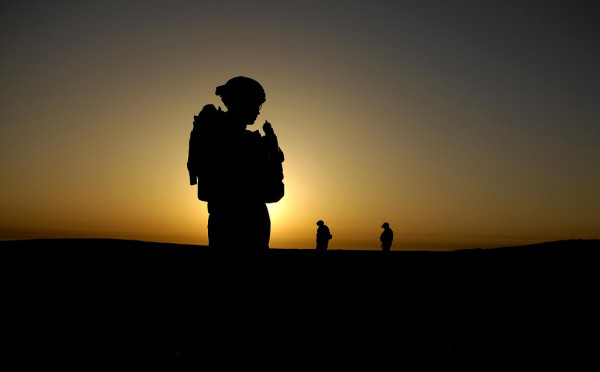

A recent study by RAND Corp. found that the military’s treatment of post-traumatic stress disorder and depression was impacted by an individual’s pay grade, with higher ranking personnel receiving greater access to medication and treatment than those at the lowest ranks.
The Feb. 18 report, “Quality of Care for PTSD and Depression in the Military Health System,” looked into whether there are disparities in care based on branch, region, and personal characteristics of service members, such as gender, age, race, deployment history, and pay grade.
“One of the things we looked at, in addition to describing the kinds of care that they received and assessing whether they received appropriate care or recommended care, we looked for variations in care,” explained Kimberly Hepner, a senior behavioral scientist with RAND, and the lead author of the study, in an interview with Task & Purpose.
Related: The Army doesn’t consistently track meds for PTSD, report finds »
The RAND report, commissioned by the Department of Defense, is in the first phase of a multiphase effort to analyze the Military Health System’s performance, explained Kevin Dwyer, a spokesman for the Defense Health Administration, in an email to Task & Purpose.
“This is a first step,” Dwyer wrote. “The Department will use this information to shape its future direction, and looks forward to implementing additional improvements in the coming year.”
The 18-month study, which began in January 2012 and ended in June 2013, drew from nearly 40,000 service members who were diagnosed with post-traumatic stress disorder, or depression, or both, and research into the results is still ongoing.
“We did find that enlisted service members received less consistent care in some cases, particularly, on care for depression,” explained Hepner. “We saw that enlisted service members were less likely to receive an adequate duration of medication treatment. One of the aspects of care that we looked at, was if they start medication treatment for their depression, did they receive medication for a long enough period of time to help to ensure that it would be effective.”
For service members with depression, the report notes that the percentage of personnel with up to 12 weeks of filled antidepressant prescriptions increased significantly as the pay grade increased.
“We did see that enlisted service members were less likely to receive that adequate measure of treatment,” added Hepner. “We also found that they are less likely to get adequate initial treatment following a diagnosis.”
Hepner defined adequate treatment in this case as being either psychotherapy or medication treatment. Based on an analysis by RAND, a patient should have either four psychotherapy visits or two medication prescriptions in the first eight weeks from diagnosis, she said.
Among service members with post-traumatic stress disorder, officers had significantly higher rates of filled prescriptions for antidepressants than those in the lowest pay grade, though that was the only major difference in care, compared to depression.
In a span of two months following a new prescription, the percentage of filled antidepressant prescriptions was significantly lower among service members in the lowest pay grade category compared to junior officers.
For junior officers, 82.4% had their prescriptions filled in that 60-day window, compared to 65.9% of junior enlisted personnel.
In the case of service members with post-traumatic stress disorder, Hepner explained that the difference in care between officers and enlisted was less severe, which might indicate that this is not a systemic issue.
“We only saw these differences in some aspects of care,” Hepner stressed. “We didn’t see these differences in terms of enlisted service members getting less consistent care across all areas that we looked at.”
Knowing that there are specific instances where there is a disparity in care between officers and enlisted — namely adequate medication and initial treatment for post-traumatic stress disorder and depression — could help healthcare providers to zero in on the problem.
“We do want to understand what are the different barriers that are getting in the way,” Hepner said. “There can be many, whether it’s staffing, whether it’s job demands, appointment times, stigma. All of these can play a role, and so we’re very interested in understanding what might be the most important factors in understanding some of these patterns that we’re seeing.”
The study did find that the Military Health System performed well when it came to following up with all service members after they’d been hospitalized for psychological health reasons. After psychiatric hospitalization, patients are considered to be in a critical state and at a higher risk of suicide, which means out-patient follow-ups are critical.
“These are areas where the Military Health System really outperforms other systems,”
said Hepner. “This was a real bright spot in terms of the Military Health System, and what we don’t see here is that sort of variability in terms of pay grade.”
